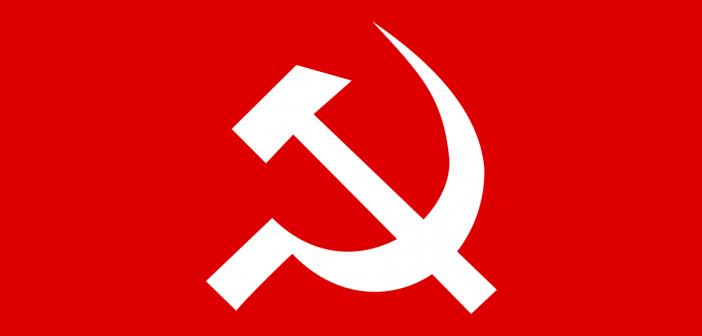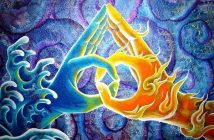The continuing incidents of violence and bloodshed in Kerala for the past many years have been a matter of deep concern for the peace-loving people of the state. The situation has further worsened ever since the LDF with Pinarayi Vijayan as the Chief Minister has taken up the reins of the power in the state. Moreover, the approach of the present state government in the matter is highly disappointing. It is most unfortunate that the Chief Minister, rather than acting in consonance of with the Oath of Office and Secrecy taken by him at the swearing in ceremony, has been acting as the party leader. His attempt to malign the RSS at New Delhi the other day by accusing it of violence and murders in the state, is a clear indication of his embarrassment over his failure to maintain law and order in the state. Latest, three Sangh activists and sympathisers, including a lady, Vimala, a Mahila Morcha worker, were killed in quick succession by the CPI (M) killer squads at Palakkad and Dharmadom, the Chief Minister’s own constituency. “CPM’s undue interference in the affairs of the police force has led to a breakdown of law and order in the state,” says the Congress leader and former state Home Minister, Thiruvanchoor Radhakrishnan, which makes unequivocally clear the state of affairs in the state as far as the law and order situation is concerned.
And this article is an attempt to expose the orgy of unprovoked violence and merciless killings indulged by the CPI (M) in Kerala Participating in the discussions on the subject in the state Assembly on September 26, 2016, the Chief Minister said that peace could not be restored in the state by convening an all-party meeting, and the only way out was to reign in the organisations in Kerala, imparting training to commit murders. If Pinarayi Vijayan were at all honest, he should have taken stringent action against the cadres of his own party, who have virtually turned bomb-making into a cottage industry, and move about on two-wheelers and four-wheelers carrying daggers and swords to locate and finish off their political adversaries. And the moment they lay down their daggers, swords and bombs, in no time Kerala will turn once again into a heaven of peace and tranquillity.
To borrow the words of CPI (M) veteran and nonagenarian, V.S. Achutanandan, anybody in the habit of taking ‘rice-food’ can very well guess against whom Pinarayi Vijayan was pointing his finger. Reacting to an incident in which a BJP activist was murdered in broad daylight in his own village Pinarayi, the chief minister had no qualms to claim that the RSS was spreading falsehood after killing the person themselves. If what he said was true, he should have taken necessary measures to substantiate what he said, by producing solid evidence against the RSS. If at all Pinarayi Vijayan is honest, he, as the chief minister, has to order an impartial enquiry into the political murders committed in the state so far, or, at least, after he took over as the chief minister of the state. The people of the state are interested to know as to why political murders take place regularly in a state being ruled by a Leftist alliance headed by the CPI (M), whereas thirteen or more states ruled by the BJP are free from this menace? Why no action is being taken in the wake of so many murders, especially when the chief minister himself is handling the Home Portfolio? The fact of the matter is Pinarayi Vijayan refuses to budge even by fraction of a millimetre from the mindset of the leader of the goonda-gang of the party to that of the state chief minister!
Who imparts training to kill?
Anyone who looks into the history of the unending stream of political murders taking place in Kerala will easily be able to find as to who is imparting training in and abetting murders in the state. The comrades, who are nostalgic about Kayyoor and Karivelloor, also take pride in the hacking of a hapless policeman to death at Morazha, during the pre-independence days. It was only recently the media had brought to light the details of a conspiracy hatched by the Marxists to kill Kelappaji, a renowned Gandhian and a great man and social worker in his own right. Let the chief minister, who was one of the accused in the murder of Vadikkal Ramakrishnan, a poor tailoring worker, in 1969, reveal as to which organisation gave training to him and his accomplices? Who had given training and encouragement to those who had killed Sreedharan Nair, a RSS-BJS worker of Ponkunnam in the same year, and Veliyathunadu Chandran, the Aluva district physical training instructor of the RSS, in 1970? In 1978, who imparted necessary training to mercilessly kill Panunda Chandran, a student and the son of one of their own party worker, the curtain-raiser incident that set in motion the orgy of endless political violence and senseless murders in the Kannur district? Violence and murders are very much in the blood of the Communist Movement. To be precise, these are in the movement’s very DNA.
The horrifying figure of the human-slaughter that was carried out in Soviet Russia, the epicentre of international Communism, has come before the world breaking through the “Iron Curtain.” Also, the world is privy to the well-planned and cruel plot designed by Stalin and his cohorts to assassinate Trotsky, who was with them when they usurped power in Russia. The world has also witnessed the way thousands of students were mercilessly crushed under rolling battle tanks at the Tiananmen Square in China, for demanding freedom of speech and action against the corrupt administration.
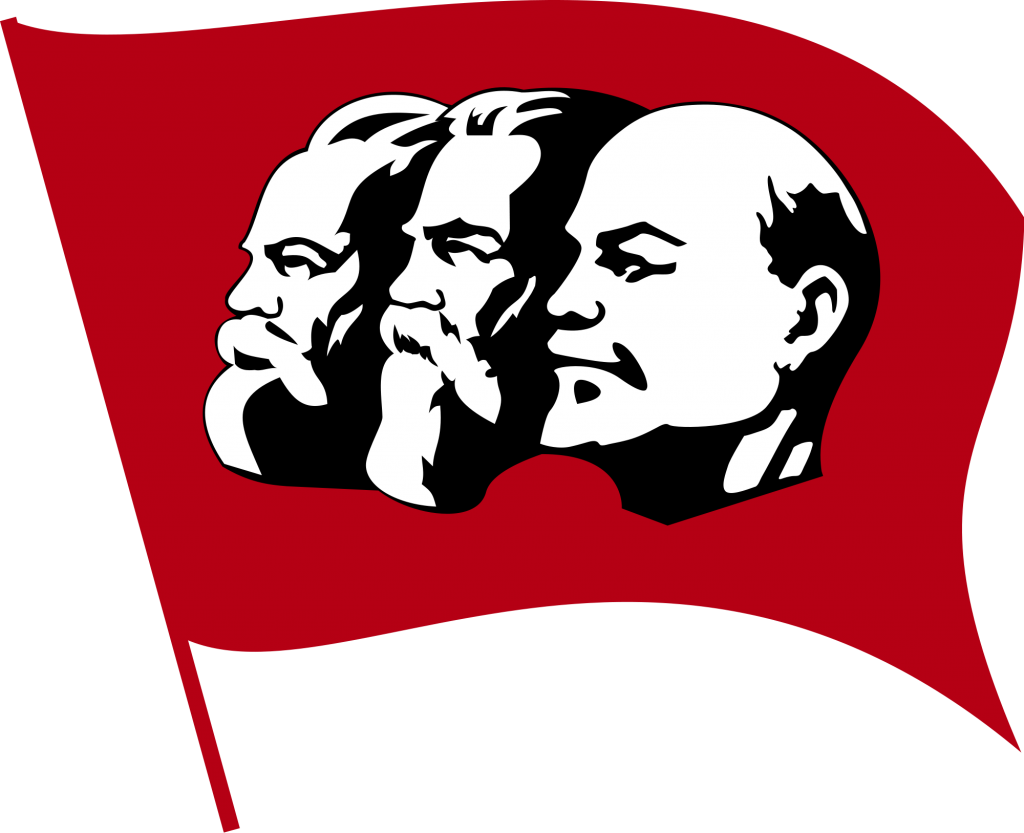
Stalin’s extermination theory, “Intense hatred is the basis of our success,” is the motivating force for the Communists all over the world. Former Member of Parliament from Kannur, M.P. Abdullakutty, who was also one the leader of the students’ wing of the CPI (M), in his biographical book, ‘Ningalenne Congress aakki,’ (You turned me into a Congressman) has recalled an incident, in which, during an informal chat, Pinarayi Vijayan narrated to him how the comrades in Bengal ‘handled’ their adversaries, without leaving behind even the remotest trace of any evidence. Through this narrative, Pinarayi Vijayan was, in effect, prodding his companions to kill others. This was, according to Abdullakutty, what Pinarayi Vijayan had said: “Once you catch the adversaries alive, bundle them in gunny-bags and lower the bundles in deep pits and cover the bundles with a thick layer of salt, before filling and levelling the pit with earth, there will not be any evidence whatsoever to prove their murder. Can you find any other political party or leader anywhere, who can suggest a better way to liquidate the enemies without leaving any trace of evidence!
Horrible nature of the Communist killings
The murders committed by the Communists will invariably have a common pattern: they will be extremely cruel, inhuman and barbarous. Also, such murders cannot be attributed to any sudden outburst of emotions caused by some untoward incidents, but have been committed with premeditation, immaculate planning, identifying the prey well in advance. Moreover, all murders committed so far have been well-planned and executed through hired killers, giving them money and arms, apart from arranging hiding places for them after the operation. The gory nature of murders and the number of cuts inflicted on the victim forms the yardstick to assess the excellence of the murder. Killing teachers in front of their students; hacking children to death in front of their mothers; murdering parents in front of their hapless children; killing the husband by cutting him into pieces in front of his wife; burying the victim’s body in mire; in the event of failure to force entry into the victim’s home, setting fire to the house using inflammable material to ensure the death of all inmates; If someone tries to escape from their murderous attack by jumping into some river, stoning him to death to ensure a watery grave for him. These are some of the devilish ways how they kill their victims.
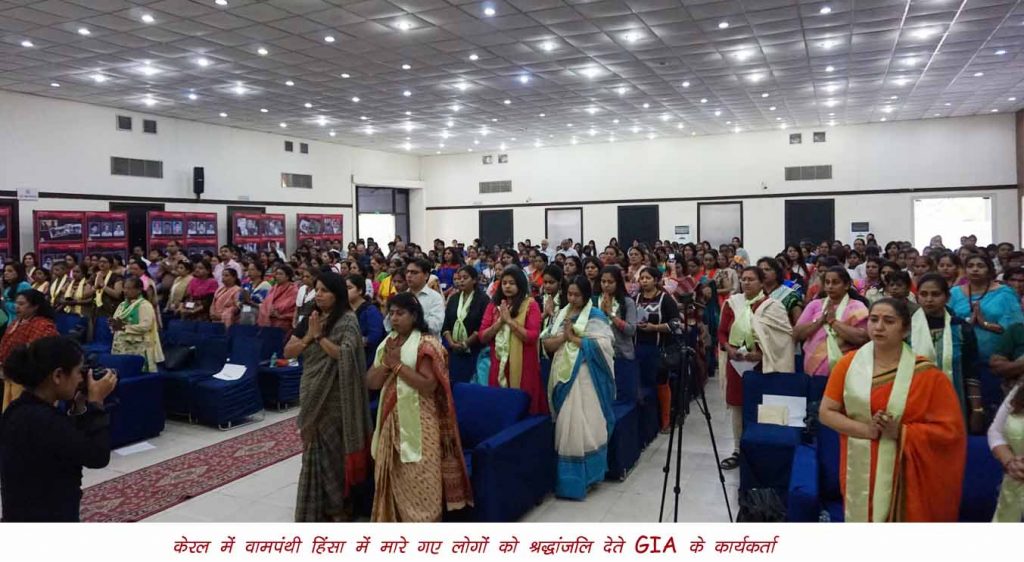
Even the other forms of violent operations the CPI (M) goonda-gangs indulge in have been most cruel and sadistic. The common nature and modus operandi of such violent ‘missions’ carried out all over the state is proof enough of the training the party has been giving to its goonda-gangs to conduct such criminal activities. First of all, they create an atmosphere of horror by exploding improvised explosive devises at the place of action; then, catching hold of their prey, they break their legs and hands in such a fashion to render them cripples for the rest of their lifetime. If they chop off the hand, they violently scratch the severed part against some hard surface and fling it away so as to ensure against its reattachment at any hospital, even in case of its retrieval; they use nail-driven wooden strips to beat their prey with so as to inflict deep and serious wounds on them; they set fire to vehicles and even throw two-wheelers into the wells; they demolish houses and cause extensive damage to television sets, telephone instruments, refrigerators, wooden-cabinets, etc.; they make a bonfire of mattresses, dresses and ransack and defile prayer rooms; they pollute wells by pouring in black oil or depositing hair-waste brought from hairdressing saloons; they even injure cattle and destroy coconut and areca- nut trees; they inflict grievous injuries on even tiny tots; if they don’t find men in whose search they have come, they don’t mind kicking wailing women of the household to vent their wrath and also use abusive language against them; And Kerala has seen them expressing their ‘love for humanity’ umpteen times through such reprehensible acts. In short, their only sadistic intention is to ensure a miserable and pathetic life to their perceived enemies, even if, by chance, peace and tranquillity returns.
Anti-law, anti-democratic
The CPI (M) never allows activities of other organisations at places which they claim as their strongholds. Neither do they allow hoisting of any other flags than their own flag at such places. It is such an anti-democratic and intolerant attitude of the party that leads to violence. Also, CPI (M) never acknowledges the right of the other parties to propagate their ideology. There have been many instances in which the CPI (M) had either threatened or abducted candidates belonging to other political parties, who had filed nomination papers to contest election against their candidates, to ensure that their candidates won the election unopposed. And the dubious practice of casting the votes of people who are either dead or out of station, by the CPI (M) in polling booths at their strongholds is highly surprising.
During the Assembly Elections in 1980, hundreds of Congress Party workers, who were physically- assaulted by the CPI (M) goondas for their ‘fault’ of acting as the polling booth agents of the Congress Party in the CPI (M) strongholds had to be admitted to the District Hospital in Kannur. During election time, there were also instances in which the BJP’s announcement vehicles were intercepted by the CPI (M) and misused such vehicles for their announcement. During the latest Assembly Elections, at Pappinissery, one of the strongholds of the CPI (M), a booth agent of the BJP was threatened by placing a dagger on his throat and he was also forced to give in writing, “Hereafter I shall do no political work.” And the visuals of this incident were telecast by all visual media in Kerala. Even in Pinarayi Vijayan’s own constituency, Dharmadom, it is surprising that the instances of fake voting were galore.
As a matter of fact, there is hardly any political party in Kerala, which has not been the prey of the CPI (M) violence. Apart from the Indian National Congress and the Indian Union Muslim League, even the CPI (M)’s alliance partner and parent organisation, the CPI, and the party’s alliance partner at the national level, the RSP, also has had the taste of their violence. Their approach to late M.V. Raghavan, who had played an important role in strengthening the CPI (M) in Kerala, after he was expelled from the party, was awful, and he survived only because of his sheer luck. When all attempts made by them to kill him proved futile, out of frustration, they vented their ire against the dumb snakes and birds at the Snake Park, run by him at Pappinissery. They had mercilessly killed many a CPI activist, who had quit the Left alliance. After the split in the Communist Party of India in 1964, the two factions were known as the Left Communist Party and the Right Communist Party, and the way the Left Communist Party dealt with a toddy-tapper of Alapuzha, who belonged to the Right Communist Party, was something horrendous. Not satisfied with breaking his right leg and right hand they as well wrenched his right earlobe and gouged his right eye in a gory fashion!
The slogan raised by the activists of the women’s wing of the party against C. Achutha Menon, a perfect gentleman and a highly respected political leader, was this: “Who is Achutha Menon’s father? Shame! Shame! You ignoble creature, keep the red flag down!” So, how can one except decency from a political outfit that trains its followers to behave in such an obnoxious manner?
CPI (M)’s response to peace initiatives
Not only that the CPI (M) has never made any honest positive move to create an atmosphere of peace and tranquillity in the state, all along it has pursued a policy of abetting, encouraging and providing every assistance to the party cadres to freely indulge in violence. The shameful inactivity of the CPI (M) and the valiant resistance put up by the RSS workers during the Emergency, gave an opportunity to the people of Kerala to evaluate both the organisations. As a result, youths and students were attracted to the RSS in a big way. During the final days of the Emergency, the RSS workers as a whole came out on the field to fight against totalitarianism. As the elections was fought by the Janata Party, in which the Bharatiya Jana Sangh had merged, in alliance with the CPI (M), in spite of serious ideological differences, the RSS workers wholeheartedly came forward to work in the constituencies in which the CPI (M) candidates were fighting. Even in the constituency of Pinarayi Vijayan, who was one of the accused in the murder case of Vadikkal Ramakrishnan, one of their co-workers, in deference to the wishes of their organisation, the RSS workers had actively participated in the campaign. However, because of the mindset of the people of the state, which was against the violent nature of the CPI (M), they were routed in the elections in Kerala, whereas all over Bharat the forces of democracy made a big gain. The people of Kerala opted for the totalitarian Congress party.
Anyhow, the ever gaining popularity of the RSS made the CPI (M) jittery. So, their leadership started a campaign under the banner of “anti-communalism.” But, more than a campaign against communalism, it was in effect, a campaign to call upon the people to beat to death the RSS men as they kill rabid dogs. And the unprovoked murder of Panunda Chandran in Kannur and a series of killings and violence thereafter, were a consequence of this.
First, it was Dattopant Thengadi, a senior RSS pracharak and the founder of the Bharatiya Mazdoor Sangh, and Comrade Ramamoorthy, the CPI (M) leader, who facilitated a meeting between the state leaders of the RSS and the CPI (M), at Ernakulam, as part of the peace initiative. Then, P.Parameshwaran, Director, Bharatiya Vichara Kendram, Thiruvananthapuram, took the initiative to arrange a meeting of two senior RSS pracharaks of Kerala, Bhaskar Rao Kalambi and R. Hari, with the then Kerala Chief Minister, E.K. Nayanar, in New Delhi. And finally, Justice V.R. Krishna Iyer took the initiative to restore peace by facilitating talks between the two sides. And every time, it was the state leadership of the CPI (M) that thwarted the attempts to restore peace in the state, as they were never interested in restoring peace. At one time, the Marxist ideologue, E.M.S. Namboodiripad, had even declared, “We will take up arms against the RSS.” When a question about an incident in which three ABVP workers were stoned to death by the CPI (M) goondas in the Pamba River in Perumala, was raised in the state Assembly during the chief minister-ship of E.K. Nayanar, the response of the chief minister was, “Why, were they not ABVP workers, what have you to do with it?” Nayanar’s reply implied that it was their privilege to kill the ABVP and Sangh Pariwar workers and no one else had any right to question it! During the high tide of CPI (M) violence, in Kannur, the unearthing of a large number of crude bombs from the residence of a party activist, situated in one of their strongholds, by a police party led by an impartial police officer, sent a shockwave throughout the state. But, when the media people enquired of the chief minister, Nayanar, about the incident, he nonchalantly replied that those were firecrackers intended for the Vishu festival. It is amply clear that the senseless violence unleashed by the CPI (M) cadres ever since Pinarayi Vijayan became the Kerala chief minister, and the provocative comment, “The wages for the work in the field will be paid at the ridge,” made by the present state secretary of the party, Kodiyeri Balakrishnan, are definitely intended to encourage the cadres to take to violence.
The training given in the RSS Sakhas is aimed at fostering discipline, patriotism, unity and mutual love. Quoting the extermination theory of the Russian autocrat Joseph Stalin, who said, “Intense hatred in the basis of the success of the Communist parties,” Sri Guruji Golwalkar, the second Sarsanghchalak of the RSS, once said: “Sacred love is the basis of our success.”
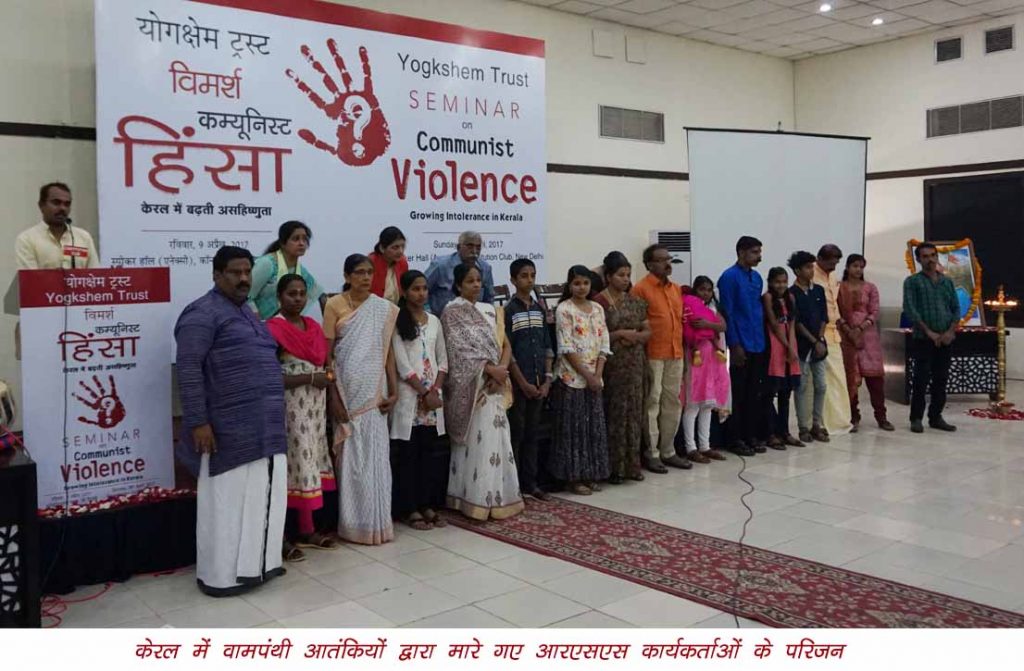
In 1979, when the murder politics of the CPI (M) was at its zenith, the then Sarsanghchalak, Poojaniya Balasahab Deoras, had visited Thalassery. On that occasion, his address to thousands of people, including a large number of uniformed Swayamsevaks, was never aimed whipping up passions. He said: “The RSS welcomes ideological debate and the Marxists, giving up their arms, should come forward for a fight at the ideological level.” After winning the fight against the Emergency, challenging cruel form torture and even death, Deorasji had undertaken a tour of whole Bharat. During that tour, as a committed and responsible leader, the call he gave to the Swayamsevaks was to forget and forgive all atrocities they were subjected to. Also, he exhorted them to actively participate in the nation-building activity. In the1980s, late P. Madhavaji, who was one of the RSS ideologues in Kerala, had undertaken an extensive tour of the Kannur district. In an atmosphere in which the Swayamsevaks were eager and impatient to defend themselves and also for retribution, in the wake of killing of Swayamsevaks, torching of their houses by the CPI (M) cadres, and putting them behind bars, implicating them in false cases by pliable police officers at the instance of the party-men, what Madhavji said, while addressing the Swayamsevaks, was this: “Our fight is against Communism and not Communists. By killing one or two Communists, Communism cannot be eradicated. Our fight should be to defeat it both at the theoretical and organisational level. Presently, Communists are treading a wrong path. But they are our own brethren, who, after realising their mistake, are sure to join us, if not today, tomorrow.” Although Madhavaji’s counsel was not acceptable to the Swayamsevaks of Kannur who were emotionally surcharged and were in a mood for some counter-action, they, nevertheless, accepted his advice against falling a prey to their emotions and to act wisely. During those days, the media, as if to add fuel to fire, used to compare the murders with scoring goals in a football match. And Madhavaji’s counsel had come at a time when the mental complexion was such that it was thought that the failure to win the match by scoring more goals would bring ignominy! As a result of the Sangh’s decision to follow the path suggested by Madhavaji, many CPI (M) cadres left the party and became Sangh workers. And, as a sequence, when the ‘party villages’ became ‘Sangh villages,’ the people there could taste the joy of peace and cooperation.

